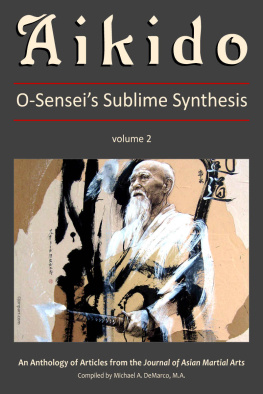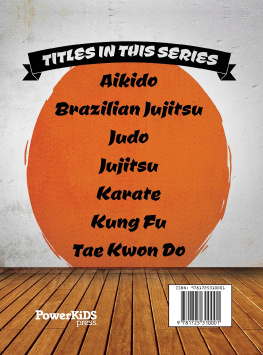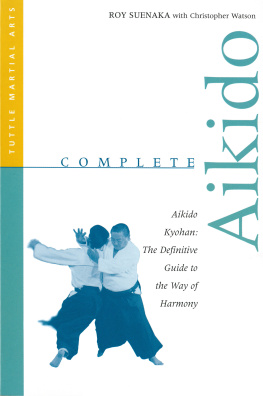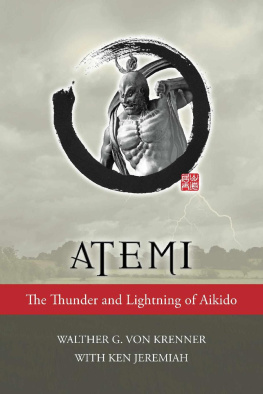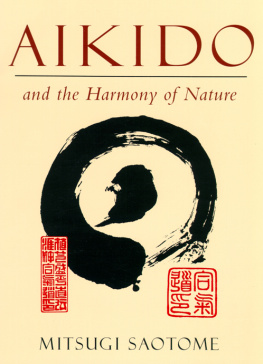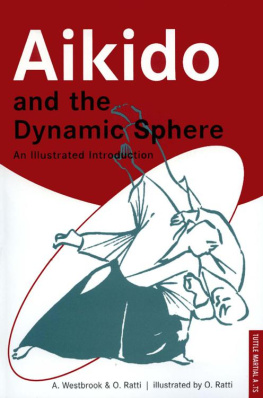Michael A DeMarco - Aikido: O-Senseis Sublime Synthesis, Vol 2
Here you can read online Michael A DeMarco - Aikido: O-Senseis Sublime Synthesis, Vol 2 full text of the book (entire story) in english for free. Download pdf and epub, get meaning, cover and reviews about this ebook. year: 2016, publisher: Via Media Publishing, genre: Romance novel. Description of the work, (preface) as well as reviews are available. Best literature library LitArk.com created for fans of good reading and offers a wide selection of genres:
Romance novel
Science fiction
Adventure
Detective
Science
History
Home and family
Prose
Art
Politics
Computer
Non-fiction
Religion
Business
Children
Humor
Choose a favorite category and find really read worthwhile books. Enjoy immersion in the world of imagination, feel the emotions of the characters or learn something new for yourself, make an fascinating discovery.
- Book:Aikido: O-Senseis Sublime Synthesis, Vol 2
- Author:
- Publisher:Via Media Publishing
- Genre:
- Year:2016
- Rating:5 / 5
- Favourites:Add to favourites
- Your mark:
Aikido: O-Senseis Sublime Synthesis, Vol 2: summary, description and annotation
We offer to read an annotation, description, summary or preface (depends on what the author of the book "Aikido: O-Senseis Sublime Synthesis, Vol 2" wrote himself). If you haven't found the necessary information about the book — write in the comments, we will try to find it.
The content in this special two-volume anthology details the many facets of aikido as it was formulated by Morihei Ueshiba (18831969) O-Sensei, the great teacher.
Each chapter contributes to a piece of the aikido puzzle by providing historical details, insightful technical drills (bare handed and with weapons), and components that have flavored this art with a spiritual essence. From the Ueshiba wellspring flows a number of streamspolitical splinter groups offering their own take on what aikido should be and how it should be practiced. Each branch may stand on its own, but a good number of scholars and practitioners prefer a more encompassing representation of what O-Sensei taught.
So, chapters in these volumes help put Humpty Dumpty back together again. Volume I includes ten chapter and volume II another fourteen. The authorstwenty-one in allpresent superb credentials as scholars and practitioners of aikido. On the academic side, youll find chapters that detail aikidos philosophy, from ethical relationships and practical theory to the subtle spiritual dimension. A few authors highlight the circumstances regarding the transmission of aikido from teacher to student. Some authors show how culture influences the perception and understanding of aikido when it travels outside Japan. Aikido is often practiced as a system of body movement encompassing a philosophy of peace and harmony. Others may focus on learning the art for its effective methods of self-defense. Composed of material previously published in the Journal of Asian Martial Arts, this two-volume anthology is heavy on the technical aspects of aikido that both teachers and students would benefit by reading. Training methods are discussed in detail, supported by hundreds of illustrations of attack and defense.
Whatever your primary interest is in aikido, Aikido: O-Senseis Sublime Synthesis will prove to be a great reference for the scholar and practitioner. We hope this convenient collection of quality material dealing with Morihei Ueshibas martial discipline will benefit your research and inspire the practice of this elegant art.
Michael A DeMarco: author's other books
Who wrote Aikido: O-Senseis Sublime Synthesis, Vol 2? Find out the surname, the name of the author of the book and a list of all author's works by series.

